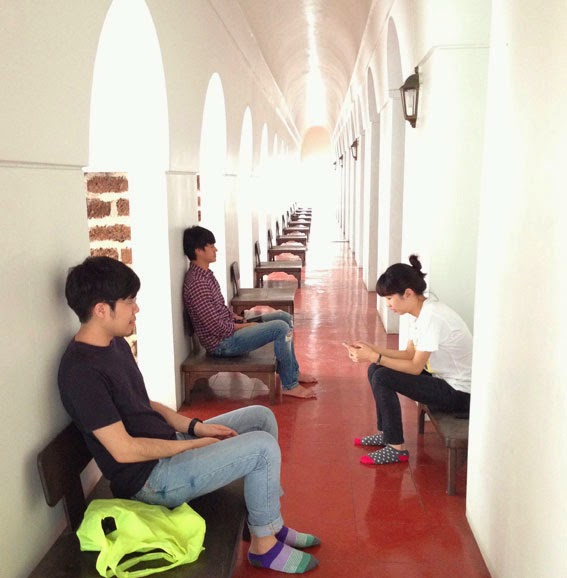Loha Prasast Wat Rachanatda (literally translation --> Metal Castle of Rachanatda Temple) which was just completed recently after more than a century of construction, is renown as the only metal castle (prasast) in Thailand and the only remain in the whole world (it seems that the other one in India was already destroyed). The building is 7-storey high with 37 dark color metal spires with very detailed decorations. It is rather different from most of Buddhism architecture we have here in Thailand. Besides the peculiar form of Loha Prasast, the interior space is by far more complex and interesting than the exterior metal feature which is usually known.

Loha Prasast could be called as 'architecture of circulation', because the whole building is mainly circulation centering around the center with 2-axis symmetrical plan on every floor. The ground floor is layers of corridors formed by arch colonnades that are exactly the same on the four sides. Natural light penetrates through the layer of arches leading through the darker center where the spiral stair situates.
Walking up through the central spiral stair until reaching the second level, the first scene is a Buddha image with natural light on its front. The light is from a very narrow open space layering between the main part of the building and the outer ring colonnade where the Buddha images are placed. Turning back, left or right, the exact same scene appears. Without seeing the surrounding, it is impossible to tell where exactly you are, which direction you are facing. The rest of the area on this floor is mainly a circulation layering around the center, like an onion structure, which does not lead to anywhere, but getting you lost in the space. The more you try to get out via the outer ring of the building, the more you get lost because every direction looks the same. It is as if you are confined in another world, complete cut from outside.
Finally after giving up to get out from the outer ring, you walk up to the next level from the same spiral stair, the same kind of scene appears again - every direction looks the same. Again, orientation and direction sense are destroyed. The world outside is totally blocked.
The techniques of de-orientation and de-perception of the outer world are the key issue of the interior space of Loha Prasast. On every level, getting up higher, you will have to get through the process of losing your orientation and cutting yourself from the outside world. It is not until they reach the 4th level that you begin to have small glimpses of the world outside.
When reaching the 7th level, the destination, where Buddha's relic is installed, you can see the whole outside world from above - the whole city is before your eyes.
It is said that Loha Prasast is an architecture built upon the teaching of enlightenment practice in Buddhism (พระโพธิปักขิยธรรม) which carries 7 chapters and 37 rules. The building, then, holds 7 levels with 37 spires. But if scrutinizing closely into architectural design aspect, the building means a lot more profound than the numbers.
The journey from the lowest level until the highest one to pay respect to Buddha's relic could be compared to one's journey of practice to reach enlightenment. The interior space is to display the state of mind of those who are into the journey of practice - getting lost, not being able to understand the world, getting higher and higher through the internal stair, while the natural lights just help to identify roughly the territory. The higher one gets, the brighter it becomes, because the distance between the center and the parameter of the building deceases reversely with the height. When one reaches the highest point of the building, after getting lost in the dim space, the extremely bright space appears before the eyes, the mind get relieved and lighted. This is an imitation to the state of mind when one reached the enlightenment that one could see the panoramic view of the world from above. Finally the world is the world.
Thinking of the circulations in the building more, it could be also use as a walking meditation space for those who practises meditation to reach enlightenment.
The building began its construction since the reign of King Rama III, which is about 160 years ago, and just completed recently. It is perhaps one of the best buildings in Thailand that could interpret Buddhism teaching into physical space with very refine and subtle techniques.
In comparison to the recent trend of using whatever Buddhism philosophy as a label claiming to bring back our 'glorious' past of Thailand through architecture just symbolically, Loha Prasast could offer a lot more to learn.



















